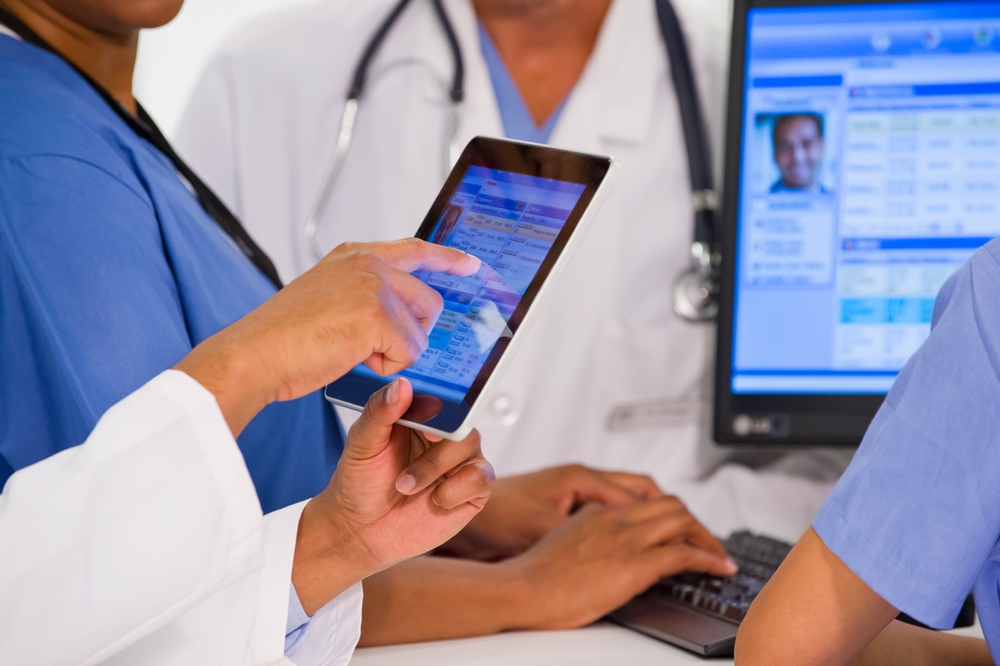Because people travel a lot and have issues in other countries , where their medical records are not accessible.

The world has become limitless, and travel has become an integral part of the life of almost every person. At the same time, being anywhere in the world, we are confident that we have continuous communication and the ability to exchange any data, complex computer programs and systems that communicate with each other for continuous data exchange in the subconscious of people is a natural process.
With this perception of complex networked systems, interoperability issues must be on the minds of people in all types of industries, and healthcare is no exception.
When it comes to the healthcare industry, interoperability refers to the ability of disparate computer and software systems to communicate and exchange data from a variety of vital sources, including laboratories, clinics, pharmacies, hospitals and healthcare facilities.
Imagine a patient who moved to another city a couple of months ago and ended up in the hospital. In his hometown, the family doctor keeps his medical record and the entire medical history, which is necessary for making a better and more efficient decision. But in the polyclinic in which he is located there is no information and there are two ways out – either to request and collect it, or to carry out many analyzes necessary for making a decision, which requires time, physical and financial costs. Imagine how the possibility of interoperability in this case would affect the situation with each individual patient and the health care system as a whole.
A recent article in Medical Economics described a case in which a heart patient from an out of town was in the emergency room. He could only describe that he had gone through “a certain procedure”, without any useful details. The doctor could have cured him faster and more comprehensively if data from the electronic medical history of a patient in his home state of North Carolina were available in New York.
Interoperability refers to the basic ability of computerized systems to easily connect and interact with each other, even if they were developed by different manufacturers in different industries. The ability to exchange information between applications, databases and other computer systems in healthcare is of immense importance for the development of modern economies and human evolution.
In the European Union, the act of information exchange is often referred to as data sharing. The European Commission’s Support Centre for Data Sharing uses this term to refer to the collection of practices, technologies, cultural elements and legal frameworks that relate to digital transactions of any kind between different types of organizations. The term is more broadly applied to all types of communication, but can also be used specifically for health-related data.
Rapid technological change in the infrastructure that supports healthcare data represents a historic opportunity for the healthcare industry to understand and optimize the digital transformation of healthcare. Its goal: to realize the power of interconnected systems to focus on the needs of individual patients.
To achieve this outcome, each interconnected component of the health ecosystem (governance and human resources, interoperability, predictive analytics, and human health) must align with and include each other.
To ensure that each component reaches its potential, it is essential that the results for each component are measured in a standardized and repeatable manner. Standards provide a common language and a common set of requirements that enable interoperability between systems and / or devices. In order to seamlessly assimilate information about a person and improve overall coordination and delivery of care, standards allow clinicians, laboratories, hospitals, pharmacies and patients to share data regardless of the application or vendor in the market.
According to section 4003 of the 21st Century Cures Act, the term ‘interoperability,’ with respect to health information technology, means such health information technology that— “(A) enables the secure exchange of electronic health information with, and use of electronic health information from, other health information technology without special effort on the part of the user; “(B) allows for complete access, exchange, and use of all electronically accessible health information for authorized use under applicable State or Federal law; and “(C) does not constitute information blocking as defined in section 3022(a).”
It’s helpful to think of interoperability as a philosophy rather than just “standards-based interoperability between computer systems,” the Electronic Health Reporter said, citing Information Advantage Group CEO Jim Bloedo. Thus, from a technical point of view, interoperability helps reduce the time required for effective communication between service providers and between doctors and their patients.
As digital devices and the infrastructures that support them become more complex, so does the interaction of data between information systems, devices and applications in healthcare organizations.
While analogue patient records and other data have been limited and physically dispersed, digital transformation allows clinicians and their organizations to dynamically access, exchange, integrate and share data. To optimize patient outcomes around the world and in every region, data must cross organizational, regional and national boundaries. Opportunities for digital transformation today have enormous potential, to which the healthcare industry must respond quickly and apply first of all, as one of the most important and influencing the economy and the development of society.




